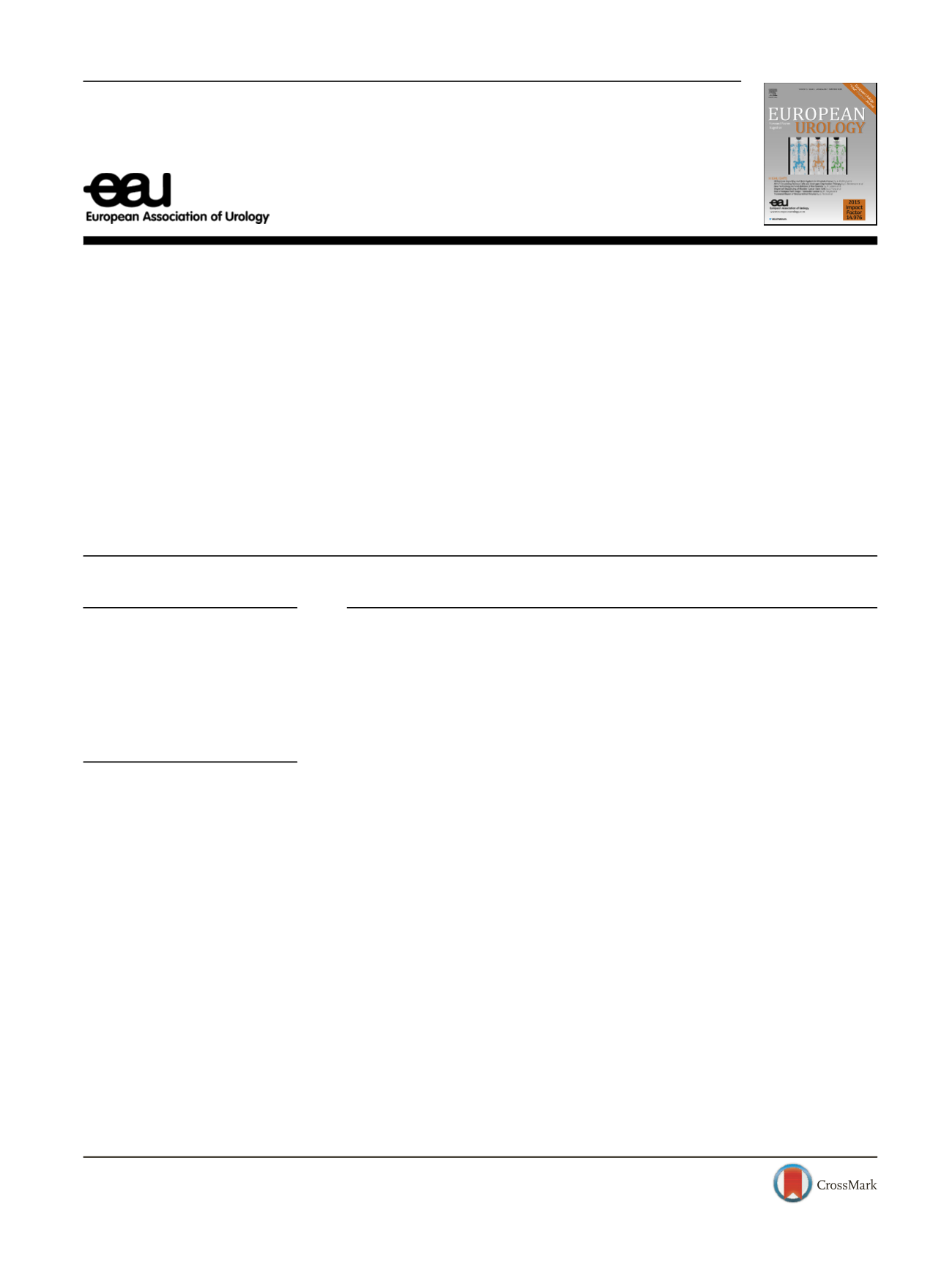

Platinum Priority
–
Prostate Cancer
Editorial by Chris Bangma and Monique Roobol on pp. 908
–
909 of this issue
Active Surveillance Versus Watchful Waiting for Localized
Prostate Cancer: A Model to Inform Decisions
Stacy Loeb
a , b , * , Qinlian Zhou b , Uwe Siebert c , d , e , f , Ursula Rochau c , Beate Jahn c ,Nikolai Mu¨hlberger
c , H. Ballentine Carter g , Herbert Lepor a , R. Scott Braithwaite ba
Department of Urology, New York University, New York, NY, USA;
b
Department of Population Health, New York University, New York, NY, USA;
c
Department
of Public Health, Health Services Research and Health Technology Assessment, UMIT
—
University for Health Sciences, Medical Informatics and Technology,
Hall i.T., Austria;
d
ONCOTYROL
—
Center for Personalized Cancer Medicine, Innsbruck, Austria;
e
Center for Health Decision Science and Department of Health
Policy and Management, Harvard T.H. Chan School of Public Health, Boston, MA, USA;
f
Department of Radiology, Massachusetts General Hospital, Harvard
Medical School, Boston, MA, USA;
g
The Brady Institute of Urology, Johns Hopkins Medical Institutions, Baltimore, MD, USA
E U R O P E A N U R O L O GY 7 2 ( 2 0 17 ) 8 9 9 – 9 0 7ava ilable at
www.sciencedirect.comjournal homepage:
www.eu ropeanurology.comArticle info
Article history:
Accepted July 17, 2017
Associate Editor:
Giacomo Novara
Statistical Editor:
Andrew Vickers
Keywords:
Prostate cancer
Active surveillance
Watchful waiting
Conservative management
Markov model
Abstract
Background:
An increasing proportion of prostate cancer is being managed conserva-
tively. However, there are no randomized trials or consensus regarding the optimal
follow-up strategy.
Objective:
To compare life expectancy and quality of life between watchful waiting
(WW) versus different strategies of active surveillance (AS).
Design, setting, and participants:
A Markov model was created for US men starting at
age 50, diagnosed with localized prostate cancer who chose conservative management
by WW or AS using different testing protocols (prostate-speci
fi
c antigen every 3
–
6 mo,
biopsy every 1
–
5 yr, or magnetic resonance imaging based). Transition probabilities and
utilities were obtained from the literature.
Outcome measurements and statistical analysis:
Primary outcomes were life years and
quality-adjusted life years (QALYs). Secondary outcomes include radical treatment,
metastasis, and prostate cancer death.
Results and limitations:
All AS strategies yielded more life years compared with WW.
Lifetime risks of prostate cancer death and metastasis were, respectively, 5.42% and
6.40% with AS versus 8.72% and 10.30% with WW. AS yielded more QALYs than WW
except in cohorts age
>
65 yr at diagnosis, or when treatment-related complications
were long term. The preferred follow-up strategy was also sensitive to whether people
value short-term over long-term bene
fi
ts (time preference). Depending on the AS
protocol, 30
–
41% underwent radical treatment within 10 yr. Extending the surveillance
biopsy interval from 1 to 5 yr reduced life years slightly, with a 0.26 difference in QALYs.
Conclusions:
AS extends life more than WW, particularly for men with higher-risk
features, but this is partly offset by the decrement in quality of life since many men
eventually receive treatment.
Patient summary:
More intensive active surveillance protocols extend life more than
watchful waiting, but this is partly offset by decrements in quality of life from subse-
quent treatment.
© 2017 European Association of Urology. Published by Elsevier B.V. All rights reserved.
* Corresponding author. 550 1
st
Ave VZ30 (6
th
Floor, 612), New York, NY 10016, USA.
Tel. +1 646 501 2559; Fax: +1 212 263 4549.
E-mail address:
stacyloeb@gmail.com(S. Loeb).
http://dx.doi.org/10.1016/j.eururo.2017.07.0180302-2838/© 2017 European Association of Urology. Published by Elsevier B.V. All rights reserved.
















